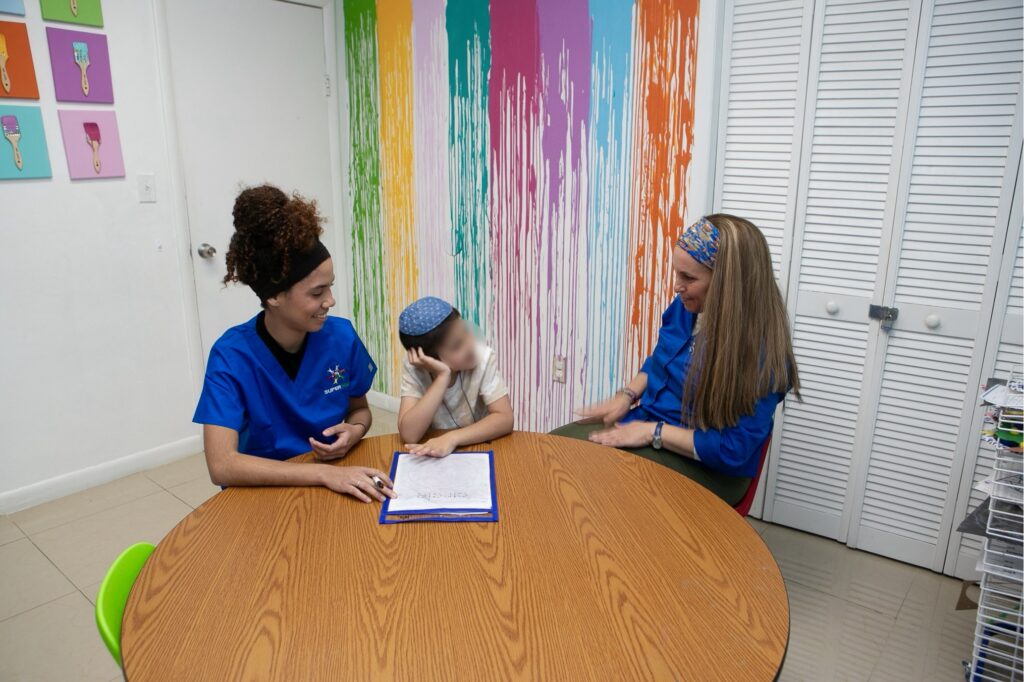
The Back-to-School has finally arrived! It can be a difficult time for the parents of children receiving ABA Therapy, but also for their therapists. Transitioning from a fun summer to a school year filled with learning can be a monumental adjustment for everyone involved.
To help make this transition smoother, here are essential tips for ABA therapists (RBTs & BCBAs) to support clients during the transition to the school year.
Transition strategies for ABA Therapists
1. Utilize Social Stories about the “start of the school year.”
Create/utilize social stories to help guide your client through the process of adjusting to new routines and/or environments. The use of simple language and illustrations in these stories can help to represent change in a positive way. This can help ease nerves by going through all the possible scenarios regarding events that could possibly happen at school.
The goal is to mentally prepare the kiddo for challenges to help reduce anxiety about upcoming changes in their lives.
2. Inquire and Attend teacher “Meet-and-Greet” If Possible
Ask your client’ parents for their school schedule and if you can attend the teacher “meet-and-greet” meetings to introduce yourself to classroom staff and familiarize yourself with important landmarks, (main entrances, pick-up and drop-off line, bathrooms, drinking fountains, lunchroom, emergency exits, etc.), in the school that your client will encounter daily.
Incorporate these “landmarks” into your social story for a smoother transition back to school for your client.
3. Implement Visual Supports
Using visuals can be helpful if they are used frequently and effectively. Reviewing common visuals, (ex.“stop,” “go,” “quiet/quiet hands,” “quiet voice,” etc.), before starting school, can help reinforce directions when in a new environment. Be sure to review the visuals with your student every day before school starts to use as needed throughout the school year as helpful reminders in a new environment.
You also can create a visual schedule for your client to have an overview of their day, including activities and events. Having a visual schedule can make transitions easier and less stressful, as it can help a client visualize their day and be aware of upcoming events in their day.
4. Engage in Role Play
After reading social stories on topics such as “interacting with others, appropriate behaviors in different settings, using words,” etc., it is a great idea to role play these topics with clients. Role playing allows the client to experience and practice social and communication skills in a safe and controlled environment. This can ensure that the learner has processed what you have read and fully understands how to implement the tips.
5. Define and Implement Reinforcers
Work with your BCBA to implement ABA programs at school and define what strong reinforcers you will bring to encourage participation in new tasks.
A new environment combined with new demands can make completing work difficult. It is imperative to ensure reinforcers do not distract students or the class during school assignments.
6. Build rapport with staff at school
Establish relationships with your client’s teachers to help foster collaboration throughout the school year. Obtaining contact information earlier in the year can be a helpful task just in case you encounter questions or need to stay up-to-date with information. Inform your client’s parents about this information so that the whole team can be on the same page.
As an ABA professional, your supportive role complements the educational experience, enhancing overall development.
7. Ensure Compliance with School Requirements
Check school requirements regarding ID badges and background checks. Most public and private schools require current IDs and fingerprints for all educators, RBTs, and BCBAs. Update your contact information with the school office for smooth communication and coordination this school year.
Administration will need to send information to the school to ensure you are ready to begin sessions. Check in with them regularly to ensure all of your information is up to date and correct.

As ABA therapists (RBTs & BCBAs), you are equipped with various tools and strategies to support your clients when transitioning from a summer of relaxation to a structured school environment. Through collaboration with schools and educators, ABA therapy can significantly enhance holistic development and create positive outcomes for children with autism.
Continue striving to be the best ABA professional. We recommend reading our article ‘‘AI in ABA Therapy’’ to stay informed and up-to-date.
Let’s work together to foster a brighter future for children in academic settings and beyond!
P.S.: Share this valuable information with those who could benefit from it.
Together, we make it better!